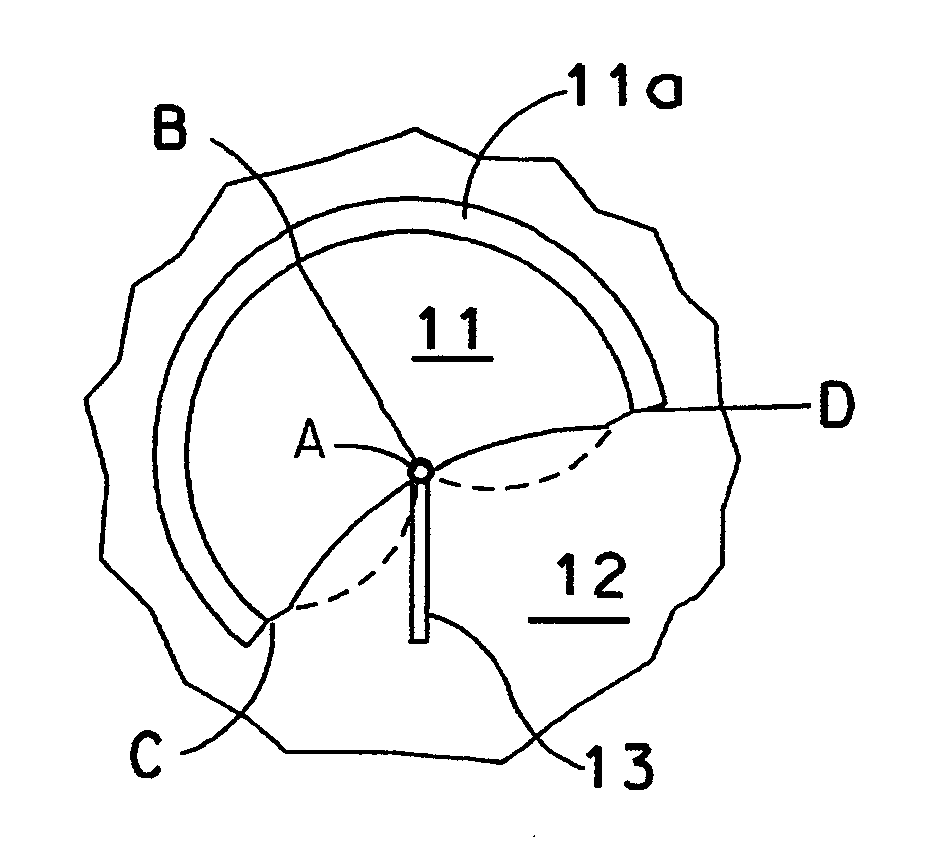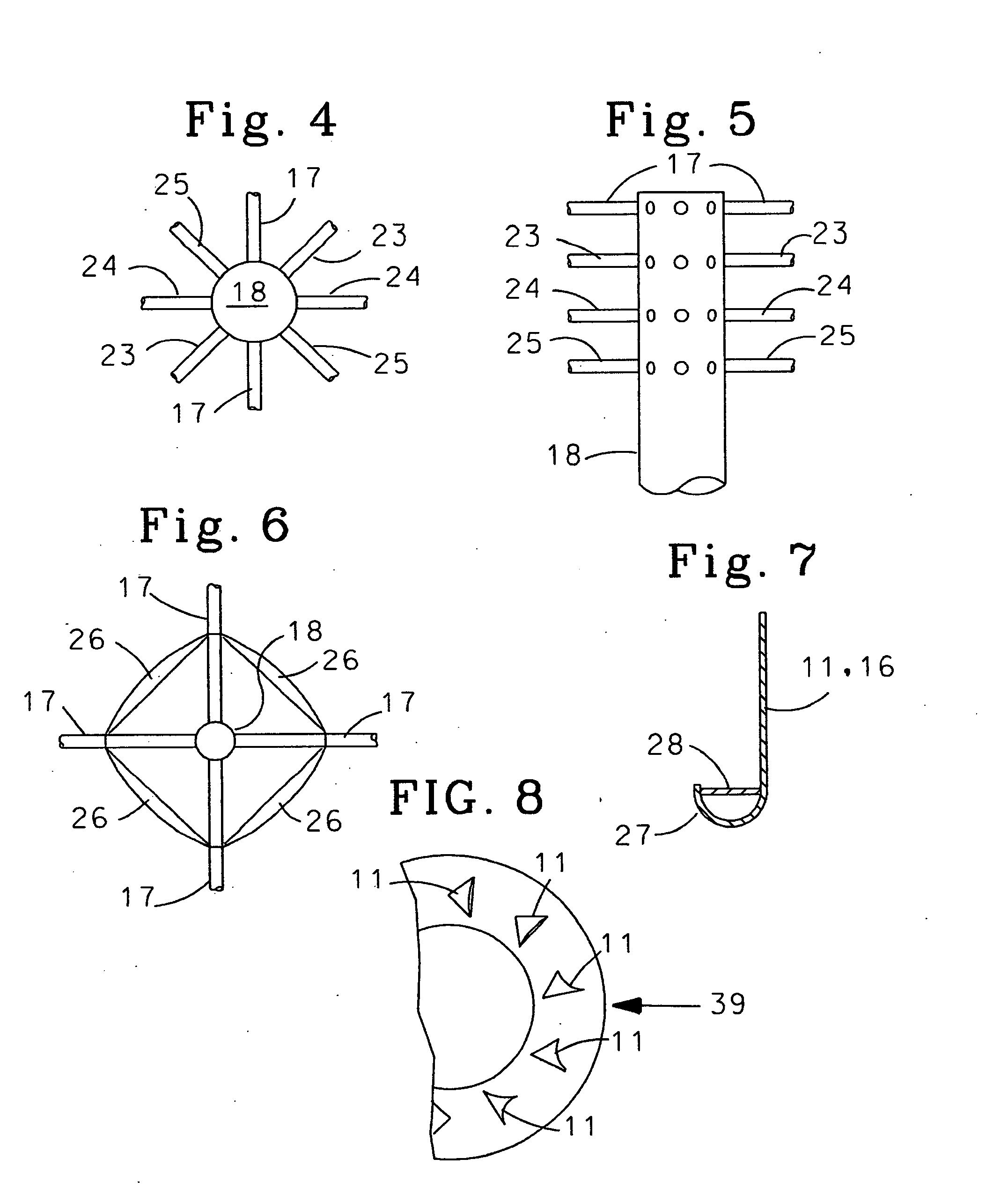Apparatus for converting wind into circular mechanical motion
a technology of mechanical motion and apparatus, which is applied in the direction of renewable energy generation, vessel construction, greenhouse gas reduction, etc., can solve the problem of maximization of opening size, and achieve the effect of promoting sail billowing and minimizing wind spillag
- Summary
- Abstract
- Description
- Claims
- Application Information
AI Technical Summary
Benefits of technology
Problems solved by technology
Method used
Image
Examples
specific embodiments
Decorative Structures
[0058]The rotating structures can be used to provide visual interest for decorative purposes as shown in FIG. 9. Such structures are similar to, but more interesting than, the common pinwheels seen on many lawns. Examples of such lawn ornaments are found in U.S. Pat. No. 5,092,809, Kessler et al., issued Mar. 3, 1992 and U.S. Pat. No. 6,789,911, Nelson et al., issued Sep. 14, 2004, said patents being incorporated herein by reference.
[0059]The structures can include cylinders with the pocket type of sail structures attached around the cylinders to create motion when the wind blows and the cup-like sails which are either decorated or which are used to move decorative structures around when the wind blows. Since the structures can have the sails oriented either to provide clockwise or counter clockwise rotation, the structures can be “stacked” as shown in FIG. 9, on top of each other to provide additional visual interest with one structure in the stack rotating opp...
PUM
 Login to View More
Login to View More Abstract
Description
Claims
Application Information
 Login to View More
Login to View More - R&D
- Intellectual Property
- Life Sciences
- Materials
- Tech Scout
- Unparalleled Data Quality
- Higher Quality Content
- 60% Fewer Hallucinations
Browse by: Latest US Patents, China's latest patents, Technical Efficacy Thesaurus, Application Domain, Technology Topic, Popular Technical Reports.
© 2025 PatSnap. All rights reserved.Legal|Privacy policy|Modern Slavery Act Transparency Statement|Sitemap|About US| Contact US: help@patsnap.com



